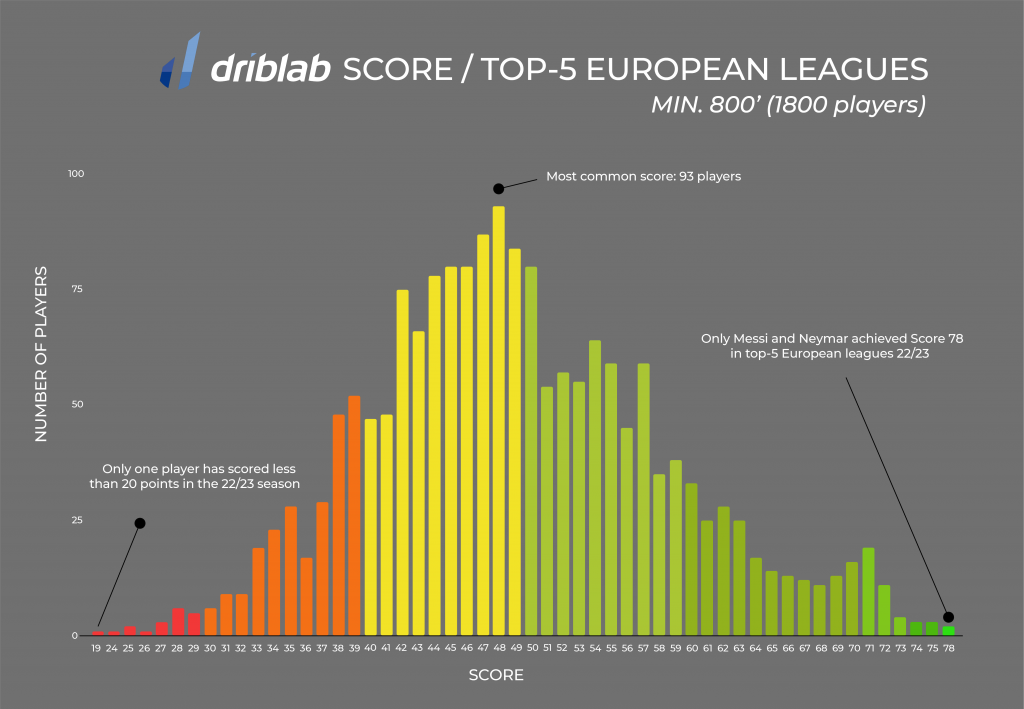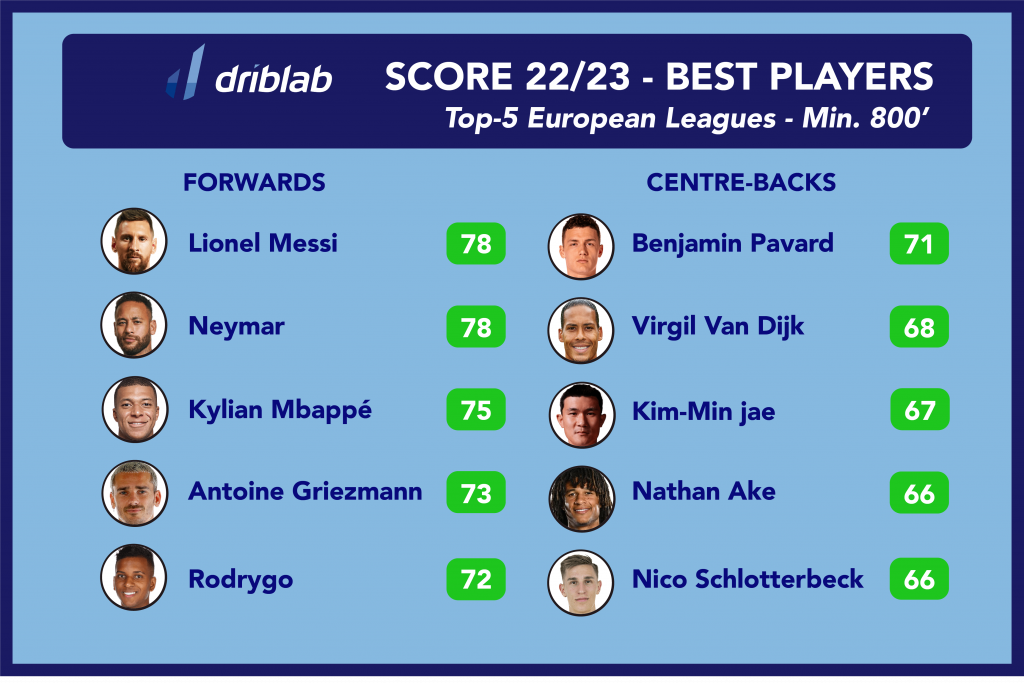On previous occasions we have explained the usefulness of developing a performance index through data and metrics to equalise criteria and measure performance objectively within a game as complex as football. However, it is equally if not more relevant to know in more detail how it is created and what kind of criteria we have taken into account to measure performance and give value to merit.
Before explaining some of these criteria, it should be noted that our index is composed of many more metrics and events that attempt to balance the method and therefore generate a fair value across all positions. Only a few of them are included here, in order to explain the spirit of the model and the reasons behind it. So what criteria do we use to shape the Driblab Score? Let’s take a look.
To begin with, we will briefly define our Score as a scoring system for players – from 0 to 100 – based on their events recorded during the course of a match, with each action having a positive or negative impact on the player’s score. For this purpose, all the actions of a match will be taken into account: from a goal, a pass, a tackle or an interception to the expected goals or other advanced statistical metrics elaborated by Driblab, which are generated after the storage of these events.
In this chart we show the 1800 players from the top five European leagues who played a minimum of 800 minutes, ranked according to their Driblab Score in the 2022/2023 season, where the most repeated score is 48, by 93 players, and where Messi and Neymar tied at the top, with 78 points out of 100.

Are all events worth the same?
Based on the criteria, weighting and variables derived from this first principle, a concrete score will be generated. And to obtain this score it is necessary that not all events are worth the same, this being a fundamental feature of our model, which scores and weights all of them differently. To give an example. The same event, let’s say a successful pass, will have a different value depending on the area of the pitch where it was made, being in this type of decisions and nuances where our criteria come into play, giving shape to a fair Score and, at the same time, adaptable to the client in its subsequent flexibilisation.
Continuing with the previous example, successful passes will have more value the closer to the opponent’s goal they leave the receiver, while missed passes will be penalised more the closer they are to the own goal. Another example that explains the meaning of our Score is that tackles or clearances, which may be erroneous if they do not regain possession, are scored positively but will score less than tackles or clearances that do regain possession for their team.
Fouls and cards, criteria included
Not all the events taken into account are of a technical and footballing nature. A fundamental criterion is that of fouls and cards, a value to be taken into account, both for those committed and those received. In relation to fouls, as with other events, the place on the pitch where they are committed or received is key. The closer they are to the goal where the player receiving the foul is attacking, the more points he will receive and the more points he will deduct from the defender who committed the foul. In other words, fouls in attack are penalised less than in defence.
As for the cards, they deduct more points depending on the time you penalise your team when they are shown. Thus, yellow cards in the 3rd minute affect much more than if they are received in the 75th minute.

Score in driblabPRO, available to the client, in a player’s file on our platform for professionals.
Importance of the score value
That is why the main value of a score index is to introduce variables with a competitive sense and with an influence, positive or negative, on the game. In the case of goals it will not be the same to score a 4-0 than a 1-1 or 1-0, and this is reflected in our index. The value of goals is a basic criterion to give shape and value to the merit, differentiating a goalscorer who gives points to his team from one who does not, even if both have scored the same number of goals.
How does the Score score between different positions?
A reasonable doubt would be to ask whether each event scores the same for all positions. Yes, the events all score the same for all positions, following the same formula, but, obviously, defenders will score more points for defensive actions and events and forwards will score more points for offensive ones.

However, some offensive events are worth more, and some positions will generate more offensive events than others. To correct for the fact that forwards participate in events with which they can score more, such as goals, we added a correction factor in order to normalise our score and make it completely independent of the position in which each player plays.
Scoring as a measure of a match and a season
The index will serve as a support and reference both for a match and for the season, so that the sum of the scores will generate an average over the matches and we will be able to know how their performance was sustained over the course of a competition.
Founded in 2017 as a consultancy, Driblab has driven innovation through data in all aspects of professional football. Thanks to a transversal model, its database collects and models statistics in all directions. From converting matches and videos into bespoke data for training academies to developing cutting-edge technology, helping clubs, federations and representative agencies in talent scouting and transfer markets. Driblab’s smart data is used by clubs all over the world, with success stories such as Dinamo Zagreb, Real Betis and Girondins Bordeaux among others. Here you can find out more about how we work and what we offer.














